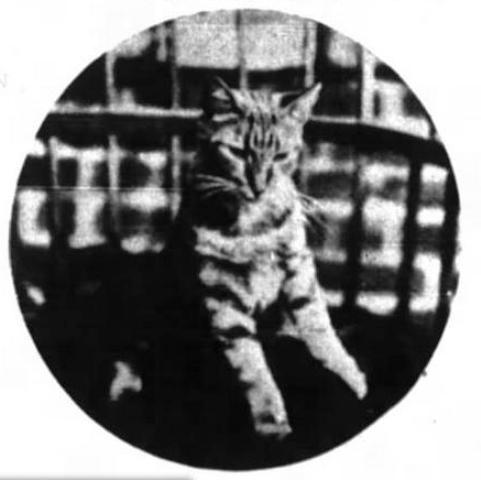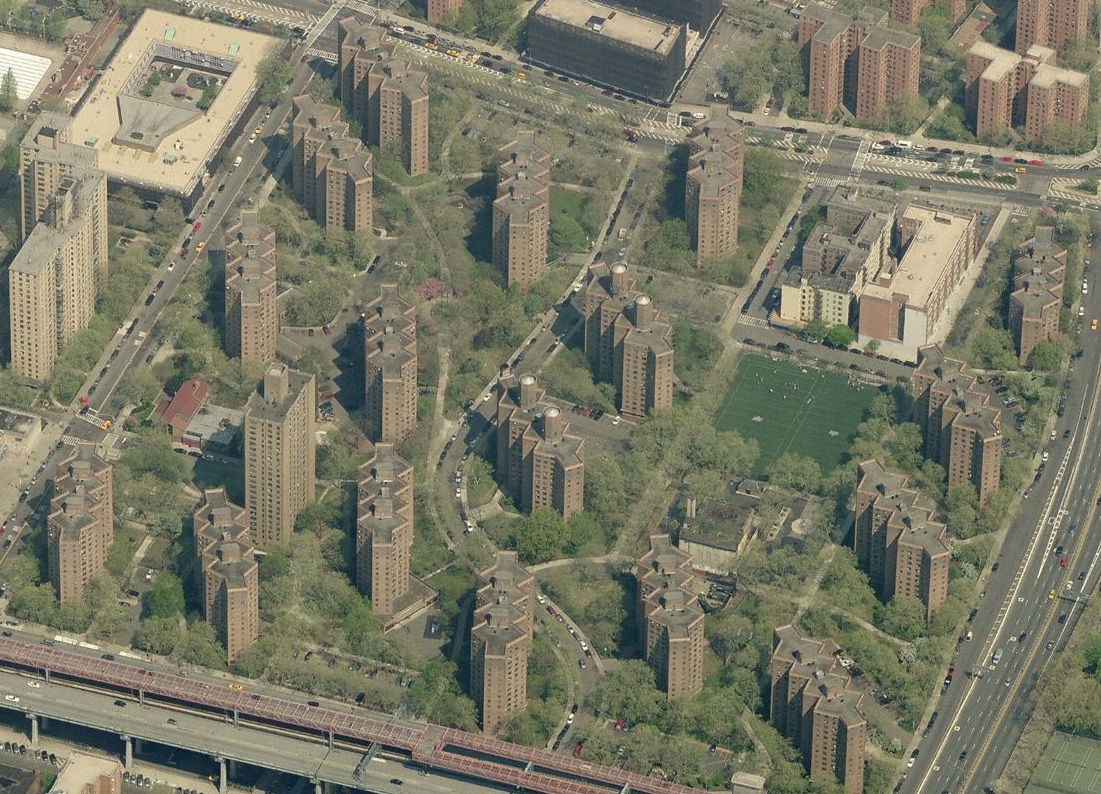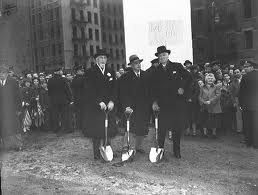In a recent post, I wrote about Ginger, a well-loved fire dog for Hook and Ladder Co. No. 5 of New York’s Metropolitan Fire Department. The following tale is also about Ginger, but this mascot was a fire cat for a historical fire company once called the Live Oak Engine Company.

In 1894, an orange tabby cat strolled into the firehouse at 437 E. Houston Street on the Lower East Side, in an area that is now known as Alphabet City. The firehouse was the headquarters for the Metropolitan Steam-Engine Company No. 11, which served the Fifth and Sixth Districts. In the late 19th century, these districts were some of the worst slum areas in the city and home to many Eastern European Jewish, Irish, and Italian immigrants.
Three years later, the fire cat named Ginger had mastered several tricks, including sliding down the brass pole and “boxing” with her trainers — firemen William Lennon and Gus Shaw — while standing on her haunches. Although Ginger was smart enough to stay behind when the men went on fire calls, she earned the title of firehouse mascot and captured the attention of The New York Times.
Live Oak Engine Company No. 44 – “Turk”
Metropolitan Steam-Engine Company No. 11 was organized on November 2, 1865. It was one of 34 engine companies organized that year under a state act titled “An Act to Create a Metropolitan Fire District.” This bill, passed into law on March 30, 1865, abolished New York’s volunteer fire department and created the Metropolitan Fire District, a Board of Commissioners, and the Metropolitan Fire Department (MFD).

Prior to the transition from volunteer to paid service in 1865, Engine Company No. 11 was known as Live Oak Engine Company 44. The volunteer fire company was organized August 2, 1824, by the master shipbuilders of the Dry Dock, which was the shipyard district that extended along the East River from Grand Street to 12th Street.
The motto of Live Oak was “We Extinguish One Flame, and Cherish Another.”
The Great Shipyard Fire
In the early 1800s, Adam and Noah Brown operated a shipyard at the foot of Stanton Street on the East River. By 1824, Brown & Bell, who were renown for constructing clipper ships and steam vessels, were also operating in this vicinity, as was Issac Webb & Company.
On March 14, 1824, at about five in the morning, a fire was discovered in Noah Brown’s steam sawmill. The fire quickly spread, destroying the mill and large ship house of Brown & Bell. In the ship house were two steamboats, including the Hudson, which was being built for K.M. Livingston and almost ready to launch. Also destroyed were two brigs and a large quantity of live oak ship timber. The flames then extended to the adjoining shipyard of Isaac Webb & Co., where a frame building and ship timber were consumed.
Engine Company No. 33, “Black Joke,” which was led by foreman James P. Allaire and located at the north end of Cherry Street between Jackson Street and Corlears Street (near present-day Corlears Hook Park), was cut off from the shore end of the shipyard by the sudden spread of the fire. Before the firemen could remove their engine from the scene, it caught fire and was completely destroyed. Several of the firemen were caught between the fire engine and the end of the dock – four of them jumped into the river but were rescued by boats from the shore.

This grand fire led to the formation of Live Oak No. 44, which was organized by Jacob Bell, Isaac Webb (foreman), John Demon, Edward Merritt, and Foster Rhodes. The company ran independent of the New York Fire Department for about four years and operated out of a small frame house that the members built themselves on Columbia Street near Houston Street.
At that time the river was almost up to what was then Goerck Street – just three blocks east of Columbia – so the firemen were very close to the shipyards.
In about 1828, Live Oak received the number 44 from the Fire Department, and had a one-story brick firehouse with peaked roof built on Houston Street, about 100 feet west of then Lewis Street (near present-day Baruch Drive and the Island School, PS/MS 188.)
On November 12, 1850, the city purchased a 25 x 180 foot lot on East Houston Street between Columbia and Cannon streets from Jonathan Rider. Live Oak moved its firehouse to this location in 1853, where the company — volunteer and paid — remained for about 100 years. It was in this newer firehouse that Ginger made her home.

The Turks
As the story goes, in 1830 renowned shipbuilder Henry Eckford took some ship carpenters, including a group from Live Oak, to Constantinople to work on a contract he had there. Eckford died shortly after arriving in Turkey, but the men continued the project and were called “Turks” when they returned to New York. The name stuck with the fire company — the men even carved two Turks standing upright and wearing sabers on their goose-neck hand pump engine.
The Transition to Engine Company 11
At the time of the transition in 1865, Live Oak owned one hand engine, one jumper, 13 lengths of hose, three ropes, one hose washer, three lanterns, two lengths of suction, three cans, three pails, three mops, and a few other odd items – all of which was turned over to New York City.
According to the 1865 Annual Report of Chief Engineer of Fire Department, Live Oak Engine Co. 44 had 50 members in 1865, 10 of whom claimed to reside at the firehouse, including Foreman William F. Squires and Assistant Foreman Peter Maloney. By this time the volunteers were of various nationalities and professions, including clerks, gunsmiths, ship carpenters, blacksmiths, barbers, and printers.
In 1897, when Ginger the cat was making her home at the East Houston Street firehouse, Engine Company 11 consisted of the following 12 members: foreman Thomas R. Kane; assistant foreman Fred. J. Rothenhausler; engineers James H. Frederick and Charles S. McArthur; firemen (1st grade) Edward F. Haulton, Gustav Shaw, Henry Decker, William J. Lennon, James P. Judge, and Edward F. Birmingham; and firemen (2nd grade) Eugene Silverman and Henry Planson.
1950: Baruch Houses Put an End to Engine Co. 11
In August 1949, Mayor William O’Dwyer – the 100th mayor of New York City — announced a new public housing development for the Lower East Side. The $31.4 million, 28-acre development, which would be called Bernard M. Baruch Houses (today known as Baruch Houses), was a Federal–aided slum clearance development under the national Housing Act signed by President Harry S. Truman.

During construction from 1953 to 1959, six blocks of slum buildings between East Houston Street and Delancey Street were razed, including Cannon, Goerick, and Mangin streets. Most of the structures that were demolished were old-law (pre-1901), walk-up tenements with communal bathrooms and either no running water or only cold water.
Baruch Houses was completed June 30, 1959, with 16 thirteen-story structures and one seven-story building – all featuring hot running water and elevators. The development provided homes for 2,194 families in 3- to 6-room apartments, with rents averaging $9 a room.

Between the construction of Baruch Houses and Mayor Fiorello H. La Guardia Houses (completed in 1957), over 1,650 people of the Lower East Side were displaced, including the firefighters of Engine Company 11. On October 15, 1957, Engine Company 11 was officially disbanded. The former site of the Live Oak Engine Company is now only a memory.

1862 Map of the Lower East Side
If you enjoyed this story, click here for a true tale about another Ginger — the fire dog of Greenwich Village.





[…] I’ve never known a cat to be very fond of fires and fire trucks – albeit, my cat Boo does love to climb ladders and bake in front of the fireplace — but old New York certainly had its share of feline fire department mascots. […]